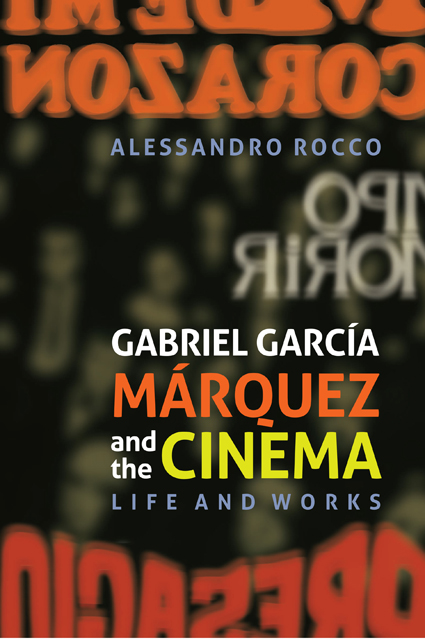Book contents
- Frontmatter
- Dedication
- Contents
- List of Illustrations
- Acknowledgements
- Preface
- 1 The Cinema in the Life of García Márquez
- 2 Tiempo de morir
- 3 Films from the 1970s: The Ghosts of Realism
- 4 Screenplay and Revolution: ¡Viva Sandino!
- 5 Magic Realism in the Cinema
- 6 Six Episodes for Cinema and Television: Amores difíciles
- 7 Con el amor no se juega
- 8 The Fantastic on Television: Me alquilo para soñar
- 9 History and Tragedy: Edipo Alcalde
- Afterword: Works by García Márquez Adapted for the Cinema
- Bibliography
- Index
Afterword: Works by García Márquez Adapted for the Cinema
Published online by Cambridge University Press: 24 February 2023
- Frontmatter
- Dedication
- Contents
- List of Illustrations
- Acknowledgements
- Preface
- 1 The Cinema in the Life of García Márquez
- 2 Tiempo de morir
- 3 Films from the 1970s: The Ghosts of Realism
- 4 Screenplay and Revolution: ¡Viva Sandino!
- 5 Magic Realism in the Cinema
- 6 Six Episodes for Cinema and Television: Amores difíciles
- 7 Con el amor no se juega
- 8 The Fantastic on Television: Me alquilo para soñar
- 9 History and Tragedy: Edipo Alcalde
- Afterword: Works by García Márquez Adapted for the Cinema
- Bibliography
- Index
Summary
Whenever cinema and literature are being discussed, the first subject that comes up tends to be how a literary work is served by a film adaptation. Clearly, as cinema developed into an art form in which narration was paramount, the literary tradition was rightly viewed as a source of inspiration: an immense repository of stories, characters and narrative structures ready to be transferred to the screen, often with the added advantage of being familiar to the public and hence readily recognisable. This accounts for the paradox whereby, the better-known the work of literature, the greater the desire and curiosity to see it made into a film, but at the same time the higher the risk of the film causing disappointment and frustration and of the adaptation being criticised as a missed opportunity.
It follows from this that, when the readers of a certain author are asked to consider his or her relationship with the cinema, they invariably think first of the works that have been made into films. In setting out to explore the cinematographic world of the man who, for critics and readers alike, is the most successful contemporary author writing in Spanish, we cannot fail to provide a brief overview of the film adaptations of Gabriel García Márquez’s novels and short stories. A number of producers, directors and screenwriters have been fired with the ambition to render in film the magic that enthrals the readers of his fiction and which ensured the extraordinary, instant success of Cien años de soledad from the moment it appeared in 1967.
Bearing this date in mind, it has to be said that only one film adaptation of a piece of García Márquez’s fiction had been made before this auspicious event, prior to which the Colombian writer, then living in Mexico, was known to and appreciated by only a small circle of readers. This was the film En este pueblo no hay ladrones, made in 1964 by the Mexican director Alberto Isaac, with the Spanish film critic Emilio García Riera as co-screenwriter, an adaptation of the short story of the same name published in Los funerales de la Mamá Grande.
- Type
- Chapter
- Information
- Gabriel García Márquez and the CinemaLife and Works, pp. 167 - 192Publisher: Boydell & BrewerPrint publication year: 2014

